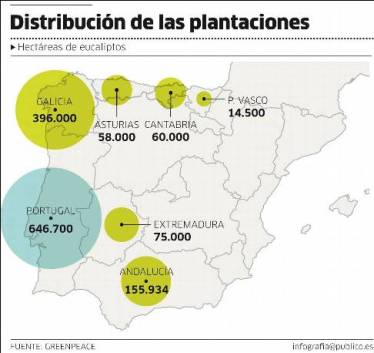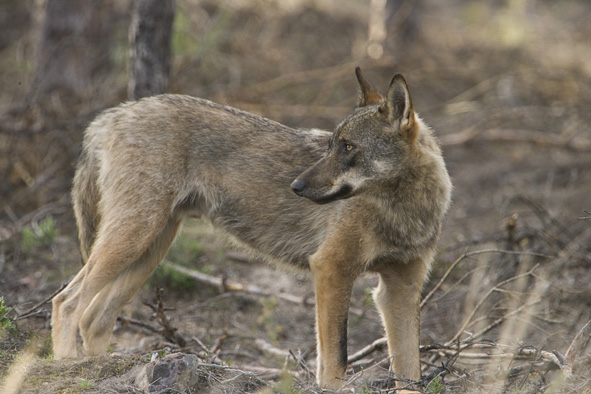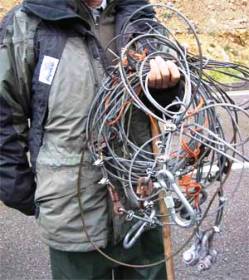The expansion of eucalyptus farming in the Iberian Peninsula began some 40 years ago, sold as a profitable panacea, a fast- growing tree species producing abundant pulp in comparison with slow-growing oaks. Today there are more than 760,000 hectares of the tree planted in Spain and 646,000 in Portugal. Don’t be fooled by the fires that rage each year in the their plantations. They are not forests, but rather green deserts with a huge environmental and landscape cost. Every years hundreds of thousands of new trees are planted: some 30 million will be planted in Galicia alone. Crónica Verde More stats from El País
I wrote this on iberianature a couple of years back in relation to a bout of eucalyptus fires:
Yes, this is bad news for the owners and the people who live in the area. One might call it an industrial disaster, but hardly bad news ecologically. If there was anything more than token policy for reintroducing autochthonous species, one might even say it was a good thing, but as it is, reforestation in this damp corner of Spain will be swift. Eucalyptus is highly combustible but also regenerates incredibly quickly afterwards. There are hundreds of fires along Galicia ‘s coast of year, yet all along the Rias Bajas and Altas there is an almost continuous mono-crop swathe of these Australian trees. This birdless green desert is the true disaster of Galicia ‘s coast.






